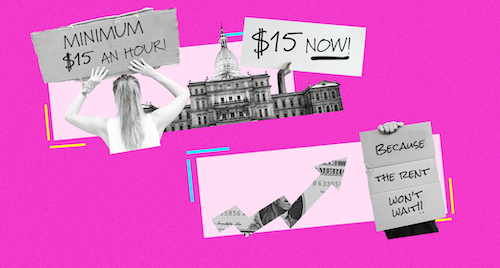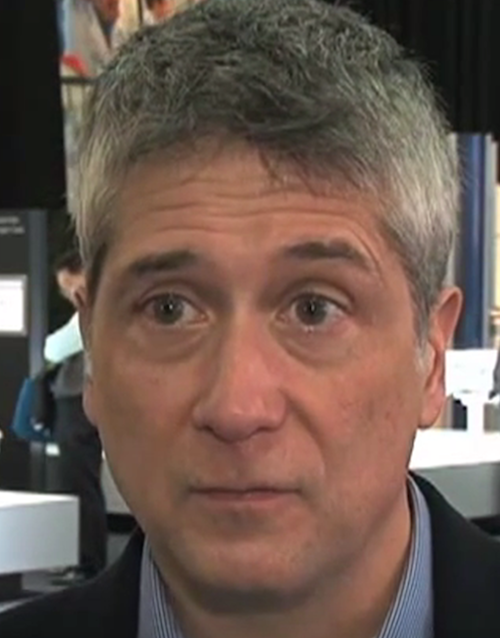“The real value of the minimum wage has declined since 1968 because it has not kept up with the pace of inflation,” says Pietrykowski, whose father worked for the U.S. Department of Labor and was in charge of enforcing minimum wage and child labor laws. “In fact, if we take inflation into account, in 2021 the Fight for $15 would be a Fight for $17.”
However, Congress doesn’t seem to be in a likely position to pass legislation on raising the hourly rate to $15 with their recent voice vote measure prohibiting an increase of the federal minimum wage during the global pandemic. And a recent study by the Congressional Budget Office concluded that although millions would benefit, a raised wage could lead to joblessness among others.
So where do we go from here? To provide insight into the federal minimum wage debate, UM-Dearborn’s Pietrykowski shares what the numbers and research data has to say.
Question: Why is there a federally set minimum wage?
Bruce Pietrykowski: Back in 1938, the Fair Labor Standards Act established the federal minimum wage as well as overtime pay for U.S. workers working over 40 hours a week. Prior to this, a patchwork system of worker protections historically benefitted employers, especially in right-to-work states that have been hostile to workers’ rights. A nationwide standard is more effective to implement and enforce.
The 2021 minimum wage is $7.25, and it has stayed there since 2009. This covers most, not all, industries. The big exception is tipped restaurant workers for whom a sub-minimum wage of $2.13 an hour is allowed under the assumption that tips will bring the hourly wage up to the Federal minimum, which is often untrue. As a result most workers across the political spectrum today agree that it is long overdue for an increase.
Q: A study by the Congressional Budget Office (CBO) concluded that millions of families would lose income due to job cuts business would need to make to balance the increased wage. Is this a valid concern?
BP: Actually, the CBO stated that there was a 67% probability of unemployment increases between zero and 3.7 million. That’s pretty inconclusive. It says raising the minimum wage could or could not impact American jobs. As for benefits, it said 1.3 million people would be lifted out of poverty. That was more definitive.
The Econ 101 textbook theory of your parents and grandparents argues that a minimum wage artificially sets prices – in this case the price of labor – too high and that employers should respond by cutting back on the number (or hours) of workers they hire. But the Econ 101 model has been contradicted by the data. Contemporary studies conducted by academic researchers in economics, business and policy find that there are few, if any, unemployment effects of higher minimum wages.
Q: One argument against an increased federal minimum wage is that it’s for entry workers like teens, who are often supported by adults. Is this an accurate portrayal of who earns minimum wage today?
BP: According to research by the National Employment Law Project a little over half of all minimum wage workers are adults between 25 and 54 years old, while only 10% are teens. But I don’t see how age matters. I think teenagers should receive a living wage if they perform the same jobs and are just as productive as adults.
Q: We’ve talked about the arguments against it. So let’s talk about the pros. What's the positive economic effect?
BP: Fewer of the working poor would be living in poverty. This is an important point that I cannot emphasize too much. Millions of working people in the U.S. today live in poverty because their wages are too damn low. They qualify for food stamps and other forms of public assistance. Instead of looking at these as handouts to the poor we need to think about them as subsidies to businesses. If businesses paid a living wage there would be less demand for government programs because fewer working people would be living in poverty. And the increased income would lead to more consumer spending that would result in income and job growth that benefits the local economy.
Furthermore, productivity is generally higher when employers pay more for labor because they try to use their workforce more effectively. And turnover — workers leaving low-wage jobs to find higher-paid work — is reduced. Finally, since many low-wage occupations (childcare workers, landscapers and health aides) are disproportionately held by women and people of color, raising the minimum wage would help to narrow the existing gender and racial wage gaps.
Q: If the federal minimum wage doesn’t change, how else can we do work differently for people who are financially struggling?
BP: Encouraging a plurality of businesses ownership models is a way to improve the lives of people struggling to make ends meet. Democratically owned and run business through worker-owned enterprises, consumer cooperatives or community-ownership — the Green Bay Packers organization is a great example — is another way to reduce the kind of economic inequality that has plagued the U.S. for decades. Some economists think that a federal job guarantee is the best policy to effectively put people to work, while others see a universal basic income as a way to support families and individuals during turbulent economic times like the kind we’re currently facing.
But no matter what we pair it with, minimum wage will need to rise if we want to reduce income inequality and poverty among the working poor. There’s a reason why there’s stagnation at the lower income levels — cost is increasing everywhere else except in their paychecks. My research has shown that it’s not their skillset; low-wage workers (fast food workers, hairdressers, home health aides, cashiers, retail sales clerks, wait staff, etc.) are undervalued, especially when it comes to their excellent social skills that include persuasion, negotiation, active listening, social perception and service. I asked their managers to evaluate the skills used by a typical employee. I estimated the wage that would be paid if worker skills were appropriately valued would rise from $10.33 to a little over $22 per hour. So $15 an hour should be the start, not the end, of a much bigger move to boost the wages of low-wage workers.
Interview by Sarah Tuxbury. If you’re a member of the media and would like to interview Professor Bruce Pietrykowski about this topic, please drop us a line at UMDearborn-News@umich.edu.






